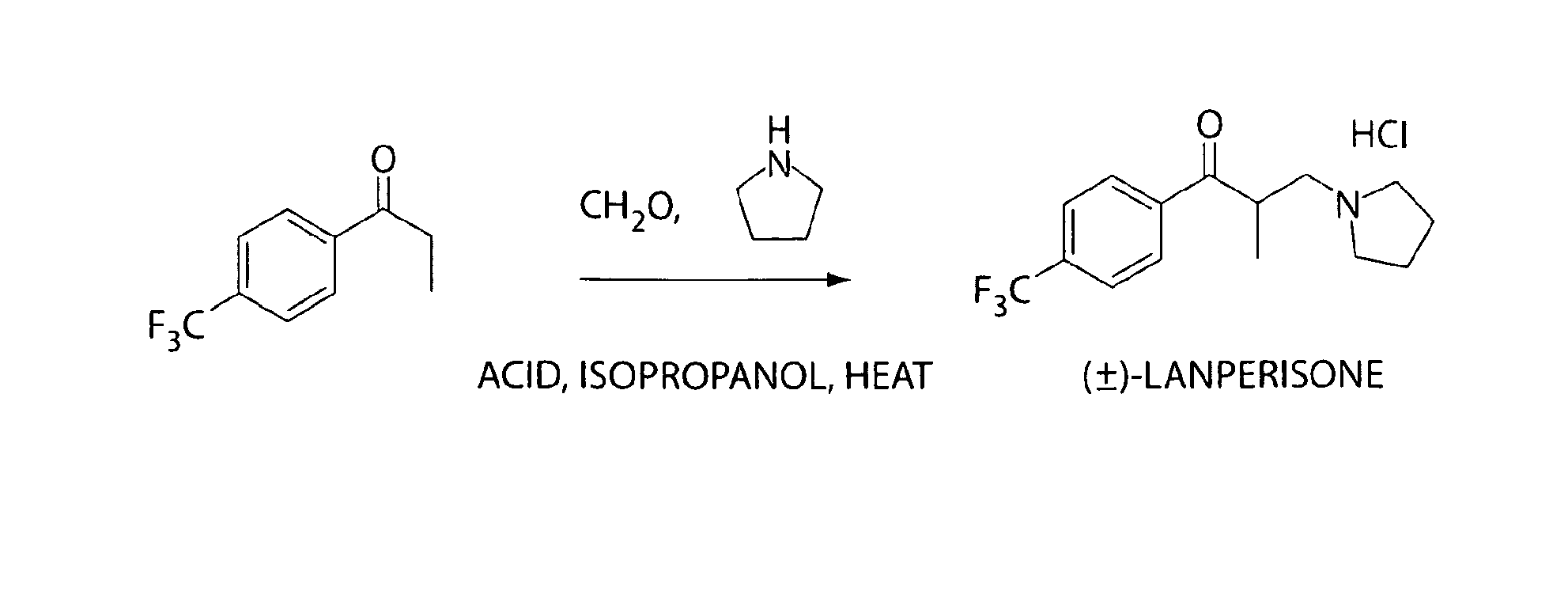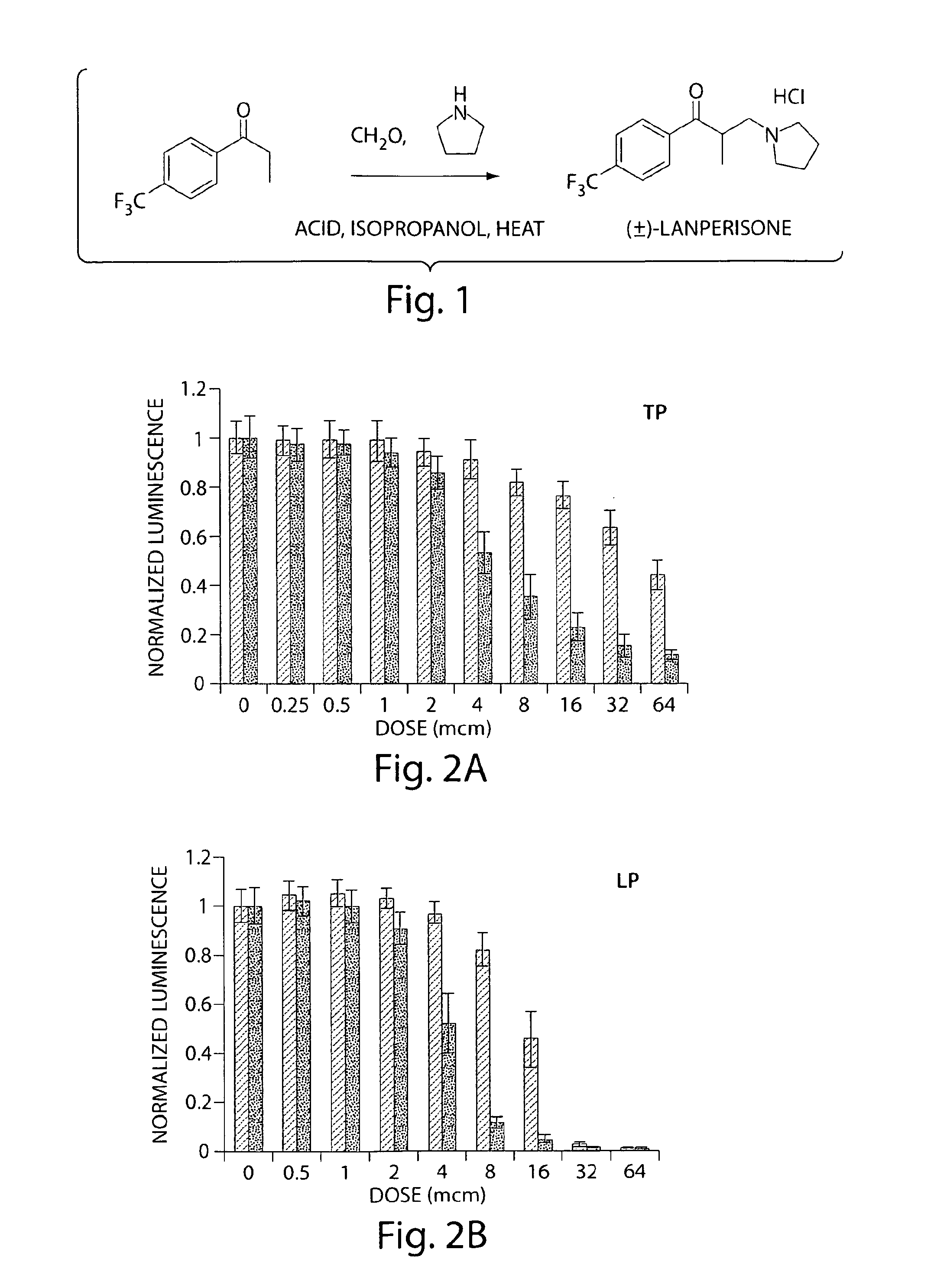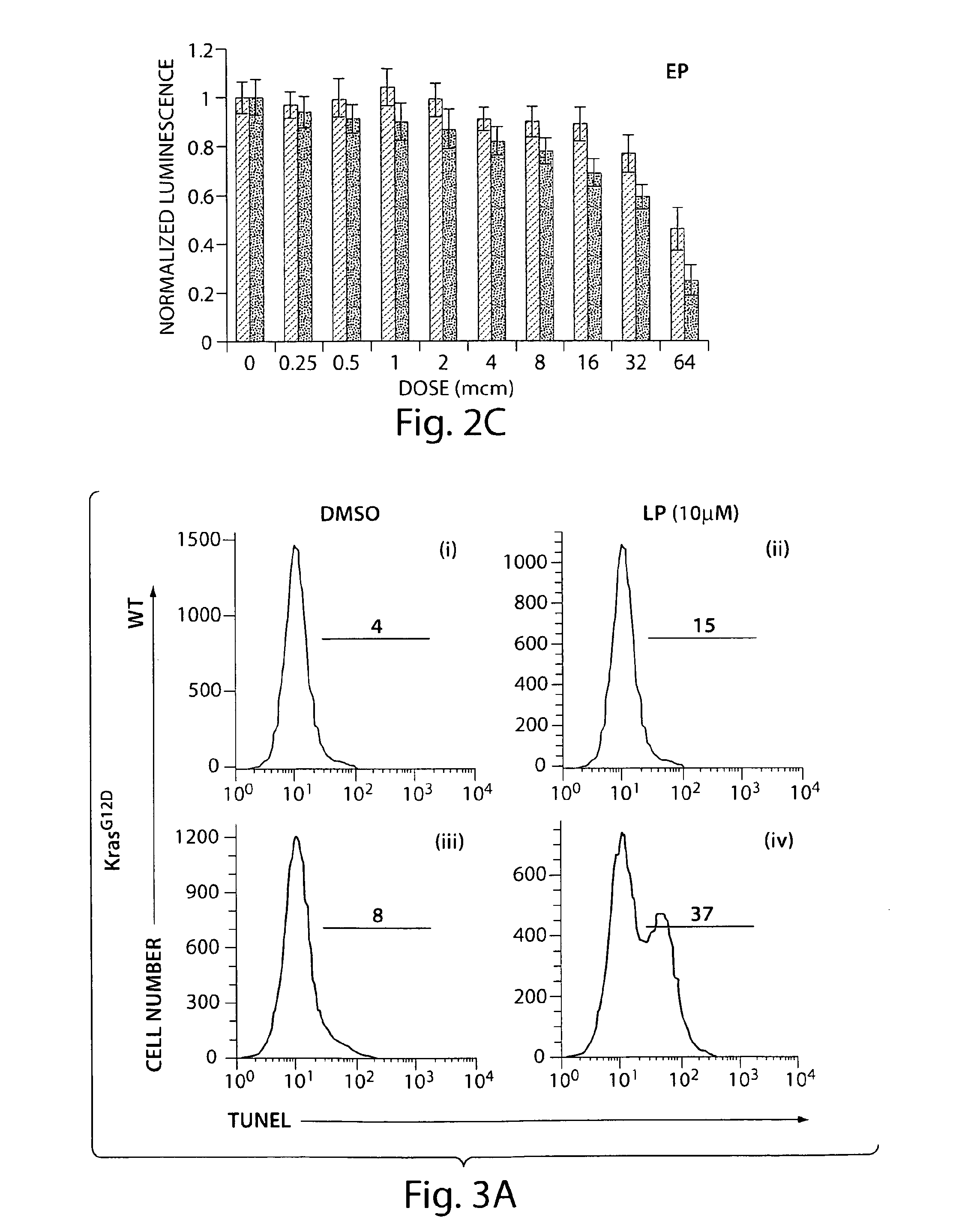Tolperisone and tolperisone-like drugs for the treatment of k-ras associated cancers
a technology of tolperisone and kras, which is applied in the direction of drug compositions, biocide, heterocyclic compound active ingredients, etc., can solve the problems that the antitumor activity of kras-targeted therapies for solid tumors has not been sufficient to be clinically effective, and achieve the effect of inducing oxidative stress or hypoxia
- Summary
- Abstract
- Description
- Claims
- Application Information
AI Technical Summary
Benefits of technology
Problems solved by technology
Method used
Image
Examples
example 1
[0140]A high-throughput, chemical genetic screen was performed for small molecules that selectively inhibited the viability of mouse embryonic fibroblasts (MEFs) expressing oncogenic K-Ras compared to wild-type control MEFs. These MEFs have been extensively characterized at the molecular and cellular level. Both wild-type and mutant K-Ras MEFs were screened to allow identification of only those compounds which selectively inhibit the mutant line. The inclusion of wild-type cells allowed for the elimination of general cytotoxic compounds and for the targeting of molecular pathways activated by oncogenic K-Ras. To measure inhibition of cell growth, a screen was performed using Promega's Cell Titer Glo Assay, which measured cell viability based on intracellular levels of ATP, an indicator of metabolically active, and hence, viable, cells.
[0141]Among the >50,000 compounds screened, tolperisone was one compound which showed differential activity at concentrations as low as 5 microns. The...
example 2
[0142]The effects of lanperisone on cell proliferation and cell death were evaluated based on a FACS analysis. Tunnel staining (for dying cells) and PI staining (excluded by living cells) were used to evaluate cell death in lanperisone and DMSO treated wild-type and K-Ras mutant cells (cells with a Kras G12D mutation). FIG. 3A shows tunel staining data for (i) DMSO-treated wild type cells, (ii) lanperisone-treated wild type cells, (iii) DMSO-treated K-Ras mutant cells, and (iv) lanperisone-treated K-Ras mutant cells. FIG. 3B shows cellular DNA content for (i) DMSO-treated wild type cells, (ii) lanperisone-treated wild type cells, (iii) DMSO-treated K-Ras mutant cells, and (iv) lanperisone-treated K-Ras mutant cells. FIG. 3C shows BrdU staining data for (i) DMSO-treated wild type cells, (ii) lanperisone-treated wild type cells, (iii) DMSO-treated K-Ras mutant cells, and (iv) lanperisone-treated K-Ras mutant cells.
[0143]The results indicated that, at 6 hours, lanperisone (at 10 μM and...
example 3
[0144]To study the selectivity of lanperisone for K-ras mutant cells, gene expression profiling experiments were carried out using wild-type and K-rasG12D MEFs treated with lanperisone or control DMSO. The gene expression signatures associated with lanperisone treatment were compared with those observed upon 1) manipulation of any of a number of defined biological pathways (i.e., Gene Set Enrichment Analysis or GSEA) and 2) treatment with small molecules with known targets including FDA-approved drugs (ie the Connectivity Map or CMAP). Numerous connectivities were observed between lanperisone and other classes of small molecules, including calcium modulators, HDAC inhibitors, and HIF activators. GSEA demonstrated marked enrichment of hypoxia as well as oxidative stress pathways in lanperisone-treated MEFs. Additional biochemical experiments showed that lanperisone closely phenocopies inducers of oxidative stress, and that lanperisone selectively kills K-rasG12D-expressing cells by i...
PUM
| Property | Measurement | Unit |
|---|---|---|
| body weight | aaaaa | aaaaa |
| body weight | aaaaa | aaaaa |
| structure | aaaaa | aaaaa |
Abstract
Description
Claims
Application Information
 Login to view more
Login to view more - R&D Engineer
- R&D Manager
- IP Professional
- Industry Leading Data Capabilities
- Powerful AI technology
- Patent DNA Extraction
Browse by: Latest US Patents, China's latest patents, Technical Efficacy Thesaurus, Application Domain, Technology Topic.
© 2024 PatSnap. All rights reserved.Legal|Privacy policy|Modern Slavery Act Transparency Statement|Sitemap



